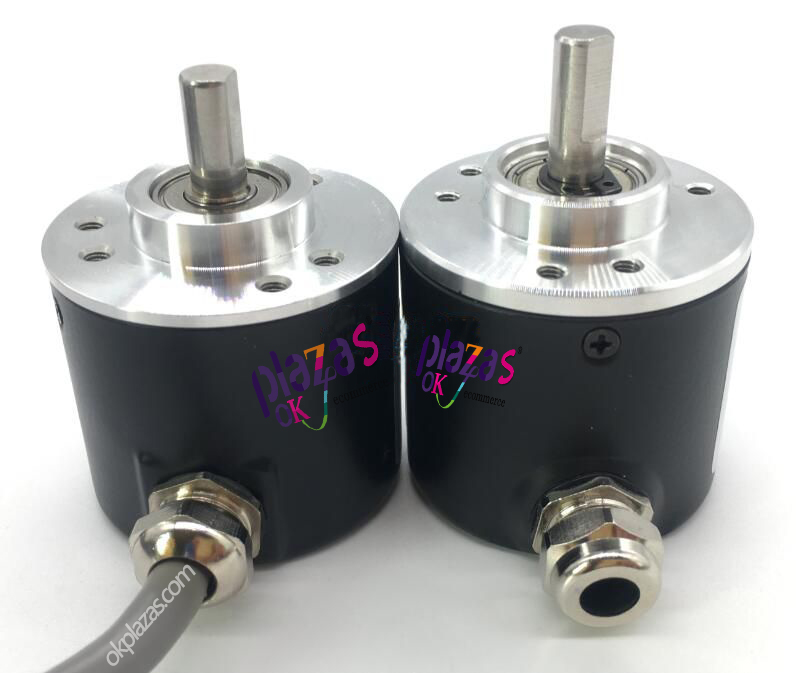What are the selection requirements for incremental encoders
What are the selection requirements for incremental encoders
What are the selection requirements for incremental encoders?
Incremental encoder is a speed displacement sensor integrating opto-electromechanical technology. When the incremental encoder shaft drives the grating disc to rotate, the light emitted by the light-emitting element is cut into intermittent light by the grating disc slit, and is received by the receiving element to generate an initial signal. After the signal is processed by the subsequent circuit, a pulse or code signal is output. It is characterized by small size, light weight, multiple varieties, complete functions, high frequency response, high resolution ability, small torque, low energy consumption, stable performance, reliable and long service life.
Incremental encoders directly use the principle of photoelectric conversion to output three sets of square wave pulses A, B, and Z; the A and B pulses have a 90 phase difference. , So that the direction of rotation can be easily judged, and the Z phase is one pulse per revolution, used for reference point positioning. Its advantages are simple structure, average mechanical life of more than tens of thousands of hours, strong anti-interference ability, high reliability, and suitable for long-distance transmission. The disadvantage is that the absolute position information of the shaft rotation cannot be output.

What are the requirements for the selection of incremental encoder?
When purchasing an incremental encoder, you need to consider other aspects, especially the technical parameters, you need to refer to the technical parameters:
First of all: whether the incremental encoder meets its own processing requirements and quality requirements; there are many types of incremental encoders, so it is necessary to choose the appropriate system; since the drive unit is the key to the control of the incremental encoder, When selecting the drive unit, the appropriate drive unit should be selected according to the accuracy requirements of the workpiece.
Second: Space size: Due to the different use environments, the choice of the space size of the incremental encoder is also very critical, because the encoder is connected to external components, and the selection of the appropriate code size has implications for the installation of the machine and the layout of the equipment. Very bad influence.
Third: Installation dimensions: including positioning port, shaft diameter, installation hole position; cable outlet method; installation space volume; whether the working environment protection level meets the requirements.
Fourth: performance: the performance of incremental encoders is mainly reflected in the processing of equipment data and its own materials. Taking into account the different use environments, encoders have more stringent requirements in terms of quality, wear resistance, and corrosion resistance. The data processing capability of the encoder is considered based on the data processing capability of the external chip of the device. Generally speaking, the lower the frequency the worse the processor.
Fifth: Resolution: That is, the number of pulses output per cycle when the incremental encoder is working, whether it meets the requirements of design and use accuracy.
Sixth: Electrical interface: The output mode of the incremental encoder includes push-pull output (F-type HTL format), voltage output (E), open collector (C, common C is NPN tube output, C2 is PNP tube output) ), and long-term drive output. The output mode should match the interface circuit of the control system.
Finally: price: price is also a very critical factor. For every user, buying low cost-effective products is of course the perfect idea. When choosing an incremental encoder, you should choose a product whose price is the same as the performance of the device and is in line with your own use. We should compare similar products in other respects, and try to avoid choosing small companies when choosing encoder manufacturers, so that product quality and service quality are more guaranteed.
In many motion control applications, temperature, vibration and environmental pollutants are important challenges that encoders must deal with. Facts have proved that incremental encoders can overcome these challenges. The optical or magnetic technology in incremental encoders can provide designers with reliable, precise and flexible solutions. In addition, incremental encoders have added programmability and diagnostic functions. This digital feature makes it more suitable for modern Internet of Things (IoT) and Industrial Internet of Things (IIoT) applications.





